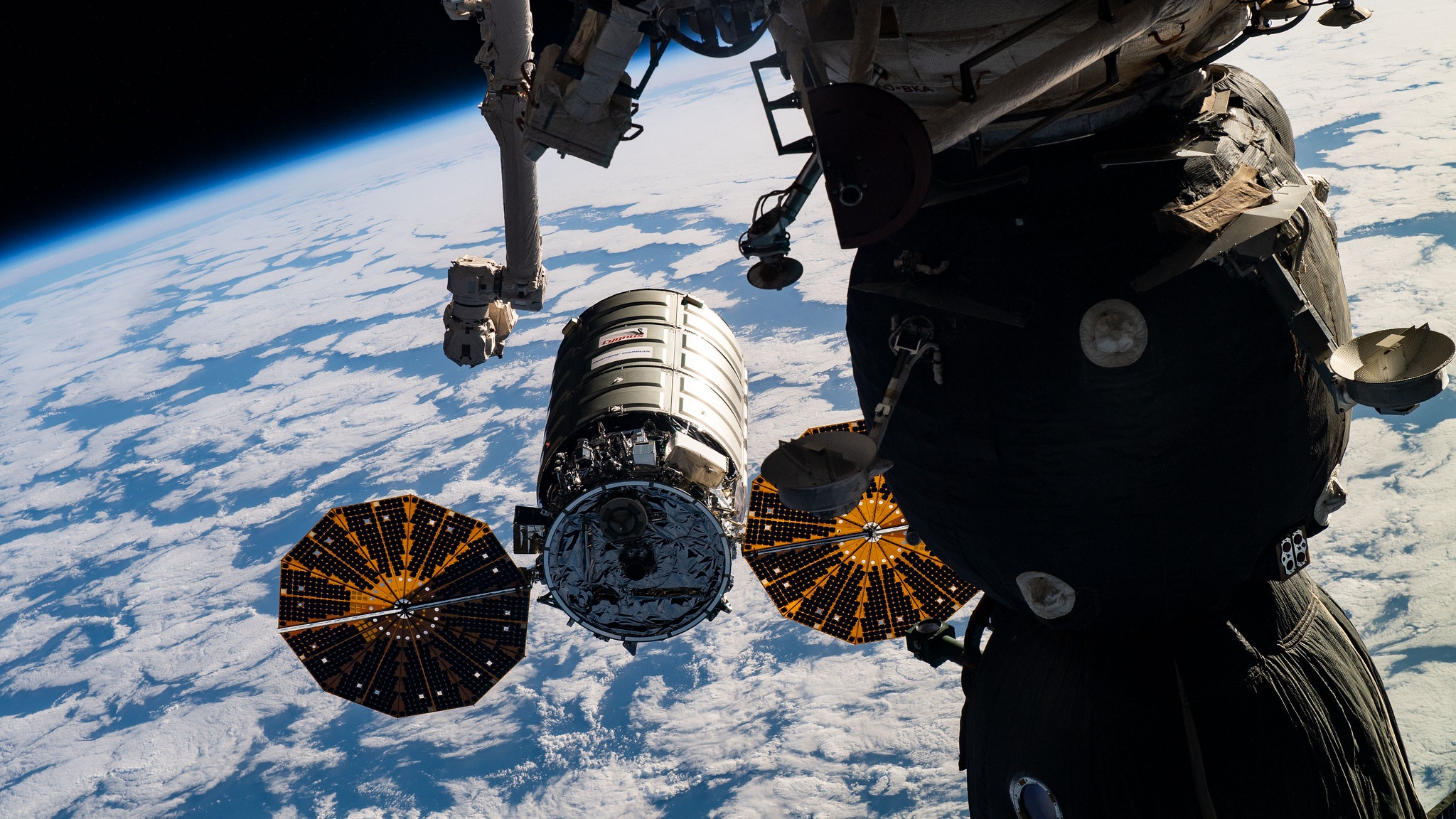NG-11 Cygnus begins multi-month post-ISS mission
/Northrop Grumman’s NG-11 Cygnus departed the International Space Station following its 3.5-month stay aboard the orbiting laboratory, beginning a multi-month free-flying secondary mission.
Using the robotic Canadarm2, the NG-11 Cygnus was unberthed Aug 6, 2019, from the Earth-facing port of the Unity module and positioned about 10 meters below the Destiny laboratory module. It was officially released at 16:15 UTC to slowly move away from the ISS.
It was the fourth visiting vehicle coming or going in the last 10 days after the arrivals of CRS-18 Dragon and Progress MS-12 on July 27 and 31, and the departure of Progress MS-11 on July 29.
The NG-11 Cygnus was named SS Roger Chaffee after one of the three Apollo 1 astronauts who died during a pre-flight launch test on Jan. 27, 1967. It launched toward the ISS atop an Antares 230 rocket at 20:46 UTC April 17 from Pad 0A at the Mid-Atlantic Regional Spaceport in Virginia.
After spending two days catching up to the orbiting outpost, Cygnus placed itself about 10 meters beneath the Destiny module to be captured by Canadarm2 and attached to the Unity module.
It brought with it 3,436 kilograms of cargo, including new science investigations, spacewalking equipment and CubeSats for deployment after the ISS portion of the mission has ended.
After 109 days at the space station, the crew loaded the vehicle with trash and unneeded equipment. The Expedition 60 astronauts then shut the Cygnus hatch. But before closing the ISS-side, they outfitted the spacecraft with the SlingShot Deployer, a device built by SEOPS that is designed to deploy CubeSats once Cygnus is at an altitude higher than the ISS sometime after its departure, according to NASA.
Other CubSats will be released via an external deployer provided by NanoRacks located on the spacecraft’s service module.
This mission is the last for Northrop Grumman for the first Commercial Resupply Services contract. Starting with NG-12 in October, Cygnus spacecraft will be flying under CRS2, which calls for a minimum of six launches by the company.
However, the NG-11 mission isn’t over. In addition to its usual post-unberthing CubeSat deployment activities, which typically don’t last more than several weeks, the spacecraft is expected to test a number of new systems, such as a control moment gyroscope attitude control system, and showcase the longevity of the spacecraft. This means the vehicle will remain in orbit on an extended free-flying mission until at least December.
This is also expected to demonstrate Northrop Grumman’s ability to operate two Cygnus spacecraft at the same time once the NG-12 cargo ship launches in October.
“Hello there”: A prelude to Gateway
Roughly a month into the extended mission, a CubeSat called Seeker (formally Seeker Robotic External CubeSat Inspection Vehicle), is expected to be deployed and demonstrate the ability to maneuver around Cygnus to take high-resolution images.
NASA said the data will be transmitted to a receiver inside Cygnus called Kenobi before being downlinked to the ground “at a later date.”
According to NASA, Seeker and Kenobi are safe, low-cost, and rapidly deployable options for external inspections of human spacecraft, negating the necessity of spacewalks and robotic arms, which require “significant planning and crew time” and are inherently dangerous.
Technologies like these, as well as the ability of the Cygnus spacecraft design to be used as a free-flying platform, could help NASA and Northrop Grumman as they work to develop a habitation module for the planned Lunar Gateway outpost.
Part of NASA’s Artemis program, the Lunar Gateway is designed to be a sort of weigh station in cislunar space where a human-rated Moon lander could be assembled and checked out. Astronauts in an Orion spacecraft would then dock to the outpost and transfer to the vehicle for the surface mission.
Its “phase one” configuration requires a power and propulsion element — to be built by Maxar Technologies — and a crew compartment that doubles as a docking node called the “minimal habitation module.”
The latter is expected to be built by Northrop Grumman and be based on the Cygnus spacecraft. While a contract hasn’t been officially signed, NASA recently announced its intention to award the company a sole-source contract for the module to be part of the Gateway by 2024.
NASA said it believes Northrop Grumman is the only company with a design that could be ready in time to help the U.S. space agency meet Vice President Mike Pence’s challenge to return American astronauts to the moon by 2024.
Launched by a commercial rocket by 2023, the minimal habitation module would travel to the power and propulsion element, which is expected to be waiting in a near-rectilinear halo orbit — essentially a highly-elliptical orbit — around the Moon.
The module is expected to include a total of four docking ports. Two axial ports would facilitate docking with the power and propulsion module as well as incoming Orion spacecraft while two radial ports would allow for the attachment of resupply ships and human-rated landers.
NOTE: While this article was written by Derek Richardson, it was originally published at SpaceFlight Insider.






